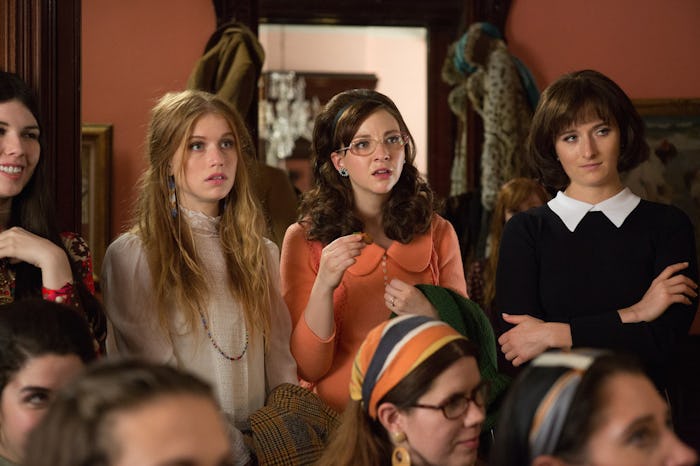Entertainment

Is 'Good Girls Revolt' Similar To 'Mad Men'? Amazon Gives A New Take On Sexism
Amazon's latest original drama Good Girls Revolt nets itself a lot of comparisons to Mad Men: it picks up in the late-1960s, around the time Mad Men left off; it focuses on a high-profile workplace in New York City; and it tackles much of the same rampant office sexism that its AMC predecessor did. But there are some stark differences too, both in terms of framing and show quality. Sure, they're set in the same time period and their art departments did a comparable job on attention to period detail. But is Good Girls Revolt similar to Mad Men, really? Here are the big differences.
First of all, Mad Men was very much told from the men's perspective, not only through its lead character, Don Draper, but also in its subplots. How many times did scenes between two women on Mad Men pass the Bechdel test? (Admittedly, that may be an unfair question, based on how dependent women were forced to be on men during that time period to begin with.) In contrast, Good Girls Revolt tells the story of seemingly insurmountable workplace sexism from the perspective of women — specifically a group of women who file a lawsuit against their employers for imposing a literal ban on female staffers trying to climb the ranks. By switching up the lens through which the story gets told, and centering the stories and perspectives on women, Good Girls Revolt has an opportunity to tell a more complex story than Mad Men could. That's the good part.
Unfortunately, the show has also been criticized for being a little formulaic, whereas part of Mad Men's success was due to its subtlety and deep emotional complexity. (Though, again, mostly from a male's point of view.) The trailer for Good Girls Revolt makes that clear enough. Its characters, with the exception of Nora Ephron and Eleanor Holmes Norton, who were based on real people, feel stock-y. Anna Camp's character is instantly recognizable as "the Betty Draper" of the bunch (or really, any of the prim, but cruel and emotionally hardened characters we've seen her play before). Erin Darke's character Cindy is "the Peggy Olsen," transitioning from mousy newlywed to sexually liberated freethinker. It doesn't seem like there are a lot of surprises in these characters, and the show feels like it relies on the same old '60s tropes we're used to.
Probably the most unusual twist Good Girls Revolt brings to the table is the way it deploys Eleanor Holmes Norton — the real-life ACLU attorney who represented the women of Newsweek in their lawsuit — as the person who pushes the story forward. In an interview with Variety, Joy Bryant, who plays Norton, explained how her character, who typically dealt with cases of racial discrimination, reveals "the fact that these white women who are privileged and middle class had no idea that they were part of this fight. And it took a sister to let them know that."
Mad Men dealt with issues of race, to be sure, but never in a way that drove the storyline for an entire season. It seems like the most promising thing Good Girls Revolt has going for it is some room to explore the intersection of womanhood and race — from the perspectives of the people living it — in a way that Mad Men didn't and couldn't.